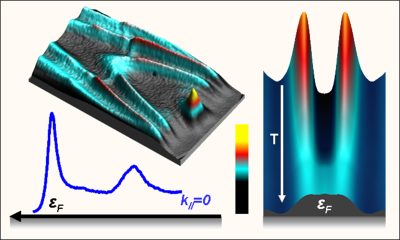
Femtosecond dynamics of Cooper pairs condensate in superconductors, melting dynamics of quantum solids, dynamics of surface electric fields in nanostructures and membranes.
Our research program focusses on the study of the effects of spin-orbit interaction (SOI) on the electronic structure of a variety of materials. Most prominent examples are topological insulators and Rashba systems where the SOI lifts the spin degeneracy, making these materials promising candidates for spintronics applications. Our experimental method of choice is spin- and angle-resolved photoemission using synchrotron radiation.
Synthesis, physical properties and manipulation of carbon nanostuctures and nanostucturedarrays.- Mechanical properties of carbon nanotubes, carbon onions, biological tubular systems.
At the Laboratory of Electron Spectroscopy (LSE-IPN) I run a research program focussed on strong electronic correlations in solids and at surfaces. The main research tool is angle-resolved photoemission (ARPES) with very high energy and momentum resolution
Neutron diffusion studies of high temperature superconductors.
He is working on several aspects of the problem of strongly correlated electronic systems, with current emphasis on frustrated magnetism and low-dimensional conductors, in the context of several transition metal oxides as well as organic conductors
We study mainly magnetic phenomena in correlated electron materials ranging from local spin clusters to novel superconductors. Our thrust is on combination of the powerful techniues of neutron scattering at large scale facilities with in house measurements